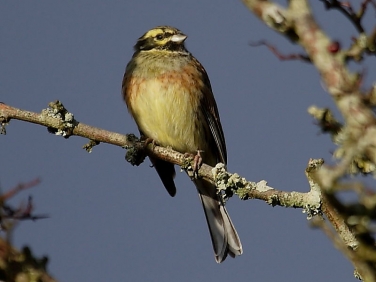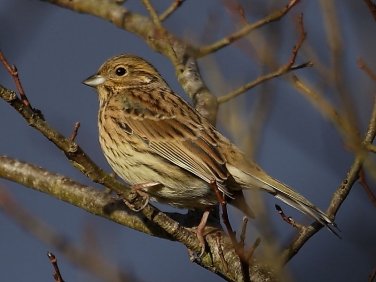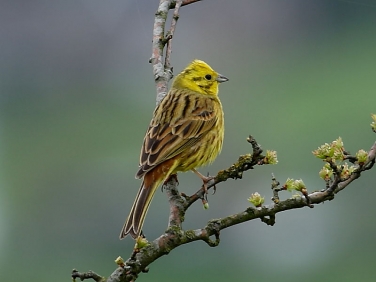Having now met the objective of the Cirl Bunting 2006 Reintroduction joint venture between the RSPB, Paignton Zoo, the National Trust and Natural England there will be no further reintroductions of birds from Devon. However, the numbers will continue to be monitored closely over the next few years and all records of sightings from visiting and local birders will prove invaluable to understanding how these birds are faring.
Identification of Cirl Bunting (Emberiza cirlus): The identification of the male Cirl Bunting with its striking black and yellow striped head is easy enough but the less well marked females can be mistaken for juvenile or female Yellowhammers.
A helpful diagnostic feature to look out for when trying to determine whether it is a Cirl Bunting or a Yellowhammer is the colour of the rump; the Yellowhammer has a reddy brown rump while the Cirl Bunting’s is olive grey. The image shown is of a male Yellowhammer showing the distinctive reddy rump which is also shared by the female. Even from the side view image shown of a female Cirl Bunting taken in Cornwall in 2010 it can be seen that there is no rusty red colouring on the rump.
Related pages: Bird posts | British birds gallery



Leave a Reply
You must be logged in to post a comment.